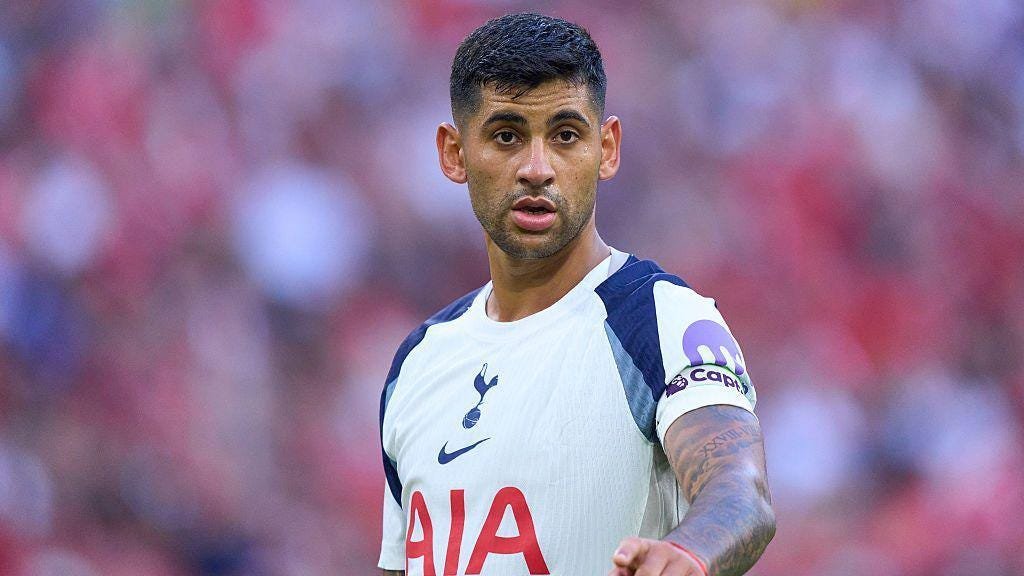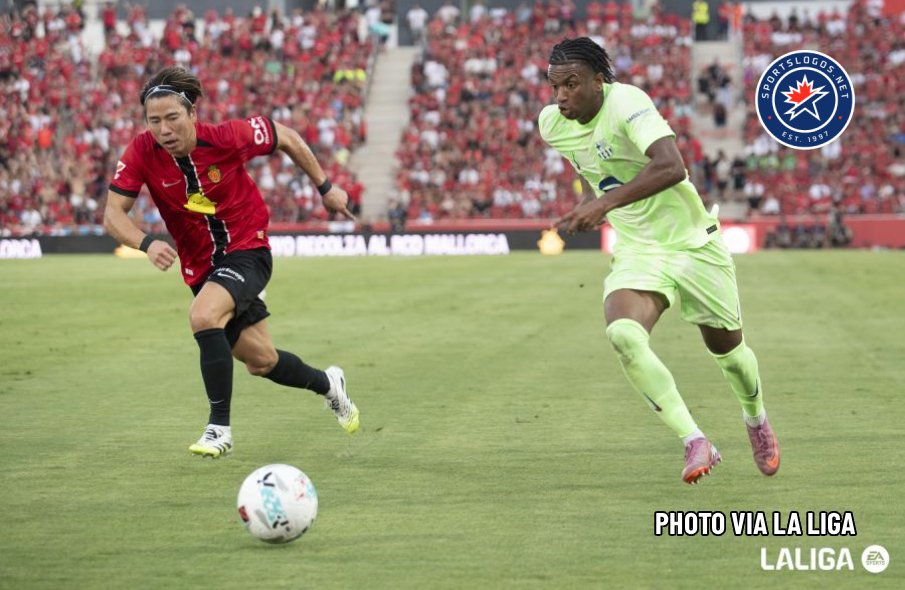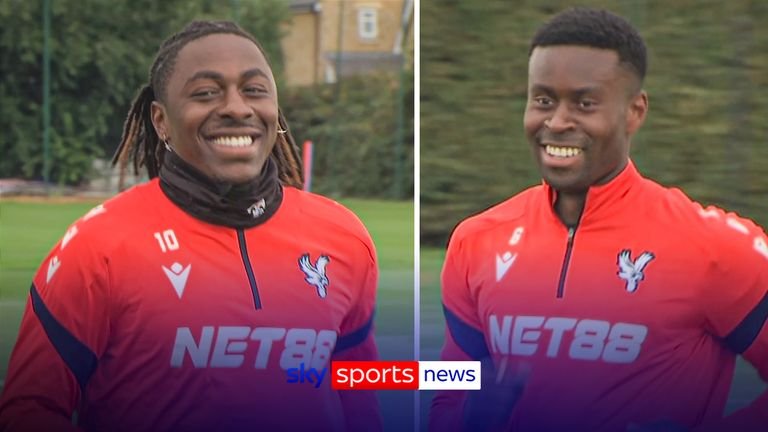Welcome back to The Alternative Premier League Table, a new series you can enjoy on The Athletic every Thursday during the season.
We all know how compelling it is to stare at standings. Whether your team is in the middle of a winning run or mired in terrible form, five minutes looking at the table can convince you that a hundred different futures are possible.
Everyone knows the standard layout of league rankings, and ours will contain several of those elements. What it will also have each week is one or two guest metrics that tap into the conversations taking place across the competition. Our aim is to enhance your holistic knowledge of the most popular football league on the planet, unearth and explain some of the season’s underlying trends.
Each week, Anantaajith Raghuraman will analyse the whole division. Last week, he explored season predictions and projections, and this time we’re looking at which of the clubs are best and worst at creating and defending chances at corners.
This article is long but detailed, so enjoy it all — or search for the team you want to read about.
The opening weekend brought 24 goals across the 10 matches, with wins for two of the three promoted sides in Leeds United and Sunderland and also for expected title contenders Liverpool, Manchester City and Arsenal.
Arsenal’s win over Manchester United, courtesy of Riccardo Calafiori’s close-range goal following a Declan Rice corner, was the latest example of how clever dead-ball routines have elevated Mikel Arteta’s team. Arsenal lacked fluidity and control but came away with all three points courtesy of that one moment.
Teams have increasingly recruited specialist coaches to try and make the most of these situations, and the second edition of The Alternative Premier League Table orders the 20 clubs based on their expected goals created and conceded figures per 100 corners.
As we are only one game into the 2025-26 campaign, the data is from last season but in our analysis following the table below we explore the trends that have carried over, as well as those changes we spotted over the opening weekend.
The metric measures the consistency of threat from corners while accounting for Leeds, Sunderland and Burnley playing more league games last season in the 24-team Championship, and the clubs have been split into four tiers. You can toggle the table by clicking the arrows next to the two highlighted columns.
Offensively great, defensively suspect
A common theme across most teams that excelled from offensive corners was to use a player to restrict the goalkeeper’s movement within the six-yard box.
Arsenal are often considered the league’s strongest team from attacking set pieces, which makes their ranking on xG per 100 corners – third behind Crystal Palace and Nottingham Forest — a surprise. Arteta has accumulated a squad of physically imposing players who excel at executing set-piece coach Nicolas Jover’s routines.
Sunday’s match at Old Trafford saw them unveil their latest strategy.
Having often used a group of players rushing from beyond one post into the six-yard box to crowd out the goalkeeper last season…

… they had five players line up on the edge of the penalty box instead, with two steaming into the six-yard box and attracting attention, allowing Viktor Gyokeres to move unchallenged to the far post.

The result was the same — chaos in the six-yard box that restricted Altay Bayindir, who palmed the ball straight onto Calafiori’s forehead.
Defensively, though, Arsenal’s 4.15xG conceded per 100 corners ranks fifth-worst. Bournemouth and Liverpool caused them problems by doing what they often do to other teams: pinning the goalkeeper, blocking defenders to create space for runners to either post, and using flick-ons at the near post to find an open man. Palace and Tottenham scored with lobbed corners to the edge of the box after packing the six-yard box, too.
Palace themselves faced similar issues, ranking first in xG created per 100 corners but fourth-worst at the other end. Their offensive corners involved striker Jean-Philippe Mateta operating close to the goalkeeper, with one designated player each for the near post, far post and centre of the six-yard box. These were often joined by three runners from near or beyond the penalty spot.
The quality of inswinging deliveries from Adam Wharton’s left foot, akin to Rice’s right for Arsenal, was effective too. Palace scored from corners in both league games against Manchester City last season.
In December’s meeting at Selhurst Park, their trademark runners freed up Daniel Munoz to leap over Kyle Walker to score, while Chris Richards was the beneficiary at the Etihad in April. Both goals came from the centre of the six-yard box, which Palace relentlessly attacked from their right-sided corners, as the graph below shows.

Defensively, Palace allowed the most shots from corners, at 1.4 per 90. Teams regularly targeted runners making their way to the farther half of the six-yard box from either side. Worryingly, Chelsea caused them problems with near-post deliveries on Sunday.
Everton also fall into this category but surprisingly scored just one goal from corners that directly led to a shot, compared to Arsenal’s five and Palace’s four. That goal came against Fulham, where they positioned two players at the far post, one at the near and one close to the goalkeeper. Two more runners ran towards the far post as the inswinger from their right was in the air, one of whom was eventual scorer Michael Keane.
The men from Goodison Park posed more threat in second and third phases following corners. A notable example came against Wolves, when they used a similar strategy but got one of their runners to move centrally instead of to the far post, which caused chaos and resulted in Craig Dawson putting the ball into his own net.
Despite their struggles otherwise, West Ham were also reasonably strong from corners, with the third-least xG conceded per 100 corners and fifth-best record at the other end. Among the teams in this category, they used the highest percentage of outswinging corners (46 per cent), with James Ward-Prowse’s deliveries from the right creating chaos.
West Ham used the same strategy to score against Bournemouth and Newcastle: four players made runs from the penalty spot as the corner was delivered, with three running into a central zone, taking defenders away from a relatively stationary player. Niclas Fullkrug played the latter role against Bournemouth, and it was Tomas Soucek in the Newcastle game.
Defensively, West Ham had the physicality and height to deal with most teams but were susceptible to losses in concentration, resulting in them being punished by delayed runs into the penalty area. Virgil van Dijk’s goal for Liverpool is a great example of the same, with West Ham failing to sufficiently mark the opposition’s biggest aerial threat in the dying moments of a game that was level at the time.

In their first game of this season, West Ham showed far more weaknesses when defending corners against a physical Sunderland side who had six players in the six-yard box, with four running towards the near post, one blocking a defender and Dan Ballard peeling away to the back post.
Ballard got his head to four out of Sunderland’s five corners before scoring from the second phase of the only one he didn’t meet, heading home their second goal of a 3-0 win from Simon Adingra’s delivery after Lucas Paqueta failed to pick him up.
Can attack, can defend
Under previous head coach Thomas Frank, Brentford progressively improved their set-piece prowess. Last season, they had the lowest xG conceded per 100 corners, while creating the sixth-best. Frank threw a variety of schemes at teams, most of which involved his players stationed near the penalty spot constantly moving around to confuse opponents.
Two goals stood out.
Against Manchester United, notorious for their defensive struggles in the six-yard box, Brentford positioned three players there, attacking both posts and the central zone, while three more players stood out near the spot. As the corner was floated in, Nathan Collins ran around Diogo Dalot and into the six-yard box, with his marker doing the same. That drew Dalot’s attention, and the split-second difference allowed Ethan Pinnock, who Dalot was originally marking, to get a clear path to meet Mikkel Damsgaard’s delivery and score.
The other was against Bournemouth, involving multiple runs towards the near post and three players blocking opposition defenders, giving Yoane Wissa the chance to run from the back post into the six-yard box to leap and score. The goal was followed by Wissa running over to the dugouts to celebrate with set-piece coach Keith Andrews. This season, Wissa is trying to leave for Newcastle, while Andrews has graduated to replace Frank, now in charge at Tottenham, as head coach.
From defensive corners, in Andrews’ time as set-piece coach, Brentford had one player each protecting the penalty spot, near post and goalkeeper Mark Flekken, with the rest man-marking rather than covering zones.
But from their first corner of the new season against Forest on Saturday, Brentford used four zonal markers (highlighted below). Rico Henry and Keane Lewis-Potter, both standing at 5ft 6in (170cm), were rather optimistically tasked with tracking the 6ft 3in (191cm) Chris Wood.

The mismatch created chaos, and Wood poked the ball home at the second time of asking. It will be interesting to see what happens to Brentford’s set-piece record this season.
Credit must go to Forest, who significantly improved on set pieces last season following the arrivals of goalkeeper Matz Sels and centre-back Nikola Milenkovic. Nuno Espirito Santo’s side were balanced at both ends of the pitch, finishing second in xG created per 100 corners and conceding the seventh-least.
Their most common setup was the one in the example above.
Two players occupy defenders at the near post while four prepare runs from the penalty spot. Two of those four moved to the far post, one went to the middle of the six-yard box and the other helped block defenders at the near post. Morgan Gibbs-White benefited from that blocking to score against Brighton, rushing to the near post and scoring with a header.
Forest also hunted for mismatches. The 6ft 4in Milenkovic’s goal against Manchester United was the best example as he switched positions on the fly to challenge Lisandro Martinez, famously short for a central defender at 5ft 9in, and score from an inswinging corner.
At the other end, Forest used their tallest defenders to cover the six-yard box and far post. Shorter players such as Neco Williams and Nicolas Dominguez were stationed at the near post, with help from pacy forwards like Anthony Elanga, who prepared for the counter-attack if Forest won the first ball. United were on the receiving end of that strategy too, conceding the goal below in April.
Anthony Elanga’s goal against Manchester United has been voted Sweetest Strike for April! 🍬 pic.twitter.com/5TKESVDllL
— Nottingham Forest (@NFFC) May 2, 2025
Good, but with a big flaw
Liverpool lacked proficiency from corners last season but their defence of them ranked second behind only Brentford. New head coach Arne Slot placed plenty of emphasis on winning duels and being adaptable, with his players executing well on both fronts.
The common theme was Liverpool’s centre-backs protecting the most dangerous zone in and around the centre of the six-yard box, while using other tall guys, like Cody Gakpo and Ryan Gravenberch, to protect either post. Liverpool’s other players were deployed as blockers or man-markers.
It worked in the league, but Newcastle used a simple routine that exposed the plan’s frailties in the Carabao Cup final. The 6ft 5in Dan Burn peeled away to the far post to escape Van Dijk and fellow centre-back Ibrahima Konate, then leapt above 5ft 9in Alexis Mac Allister to score.
Happy birthday, Dan Burn! 🥳#EFL | #CarabaoCup pic.twitter.com/hV7sFDsEre
— Carabao Cup (@Carabao_Cup) May 9, 2025
Newcastle varied their routines during the league season, too. Their standout goal from a corner was scored by Bruno Guimaraes against Bournemouth.
Two players rush from the far post to a central zone, while one pins the goalkeeper. Guimaraes stays near the penalty spot, with a team-mate on either side of him running to one post each, leaving him free to head the ball home as highlighted below.

A quarter of their total corners were played short (fourth-most), with one of those leading to a memorable goal against Leicester City. Five Newcastle players rushed towards the central zone and back-post area of the six-yard box, while Lewis Hall’s run away from goal freed up Anthony Gordon. He cut the ball back from the byline for Jacob Murphy to curl a shot in at the vacant near post.
Defensively, Newcastle struggled against outswingers to the far post due to their preference to protect the six-yard box. The arrival of set-piece coach Martin Mark, who was previously at FC Midtjylland of Denmark and is Newcastle’s first specialist in that role, this summer should see improvements. They tried a variety of routines against Aston Villa on Saturday without success.
Bournemouth were also creative with their offensive corners, most notably troubling Arsenal in both fixtures.
The first, at the Vitality Stadium in October, was one of the season’s best corner routines. Justin Kluivert raced to the near-post from behind Kai Havertz to backheel Lewis Cook’s corner, with Antoine Semenyo and Dango Ouattara blocks preventing Arsenal’s defenders from following the ball. That allowed Ryan Christie to meet it just behind the penalty spot and score.
Substitute Ryan Christie with a SENSATIONAL finish for Bournemouth! 🔥 pic.twitter.com/m4k0DZTa6V
— Sky Sports Premier League (@SkySportsPL) October 19, 2024
SET PIECE PERFECTION. 🍒
BOURNEMOUTH LEAD ARSENAL ON THE SOUTH COAST. Ryan Christie with the goal!
📺 NBC & Peacock | #BOUARS pic.twitter.com/aMG8hW9JCS
— NBC Sports Soccer (@NBCSportsSoccer) October 19, 2024
In May’s reverse fixture, the visitors used runners from the edge of the box to target Arsenal’s familiar near-post weaknesses and get a flick-on that Evanilson converted at the back post.
Defensively, Bournemouth struggled to deal with teams that used a similar strategy, with goalkeeper Kepa Arrizabalaga failing to command his area well. They also had a limited number of tall players other than their centre-backs, which meant they relied far more on zonal defending, making it easier for teams to pressure their markers into mistakes. Losing most of their first-choice back five from last season over the summer should result in more change, for good or worse, this season.
Villa were similarly solid on both ends, with the eighth-best xG created and fourth-lowest xG conceded per 100 corners.
Their preferred method of attack was to target your near post with inswingers. Youri Tielemans, while threatening with his right-footed deliveries from the left, also scored from a John McGinn corner to the near post at home against Fulham in May. Three Villa players were tasked with blocking defenders and the goalkeeper in the six-yard box — a standard part of their routine — which in turn allowed for players to run in from the penalty spot and attack the ball at the near post.
Tielemans had also assisted Ollie Watkins in October’s reverse fixture with Fulham using pretty much the same routine, as seen below.

At the other end, Villa use zonal defenders around the near post, one player to protect the goalkeeper and two to monitor runs from behind the penalty spot. The others were tasked with man-marking. While the system works against most inswinging corners, it can leave them slightly vulnerable against outswingers into central areas.
Leeds faced issues at defending corners played into their near-post area due to their preference to defend the six-yard box, but goalkeeper Illan Meslier’s lack of conviction was a big cause for concern, too. The signing of new keeper Lucas Perri has already proved valuable against Everton on Monday, even though their setup remained similar, leading to a chance for Jake O’Brien in the second half that he headed over.
Offensively, Leeds were among the best in the Championship, recording 1.3 shots from corners per 90, preferring to target the near post with inswingers from both sides. The most memorable of those came against Sheffield United, with two blockers at the near post (marked in white) and two runners from deep (black) allowing Pascal Struijk (yellow) to score from Joe Rothwell’s clever corner.

From the second and third phases of corners, Leeds frequently targeted unmarked players at the back post, creating plenty of chances, along with goals for Ao Tanaka (twice) and Wilfried Gnonto. The addition of the physically imposing Jaka Bijol and Anton Stach this summer should help on both ends, too.
Brighton complete this tier after accumulating the second-lowest xG per 100 corners but boasting the eighth-best number on the other end. They often relied on crowding out the six-yard box and capitalising on the chaos that ensued. As the graphic below shows, they regularly mixed up their approach, but had limited success.

Against Fulham on Saturday, Brighton resorted to attacking the far post with inswinging corners from Yasin Ayari on the left and Matt O’Riley on the right. Lewis Dunk even went close to scoring in the 87th minute but only found the side netting.
Defensively, they crowded the six-yard box but rarely used a defender to protect goalkeeper Bart Verbruggen or cover the back post. Their fixture against Brentford in April in particular proved difficult, with three corners resulting in shots, all at the far post from runners who escaped their marker.
Fulham’s equaliser in the final seconds at the weekend was also at the back post after Rodrigo Muniz shrugged off James Milner to meet a Brighton player’s flick-on.
Sputtering offence, concerning defence
While the xG numbers by themselves do not suggest it, Wolves were the Premier League’s big strugglers from corners in 2024-25, with difficulties in dealing with deliveries to either post due to a focus on protecting their six-yard box. Brentford, Chelsea (twice), and Palace all scored at the back post from flick-ons, West Ham from an outswinger to the back post and Tottenham and Manchester City with near-post headers.
At the other end, Matheus Cunha scored an ‘olimpico’ against Manchester United, who he has since joined, while Jorgen Strand Larsen’s 6ft 4in height helped him score and also set up Emmanuel Agbadou against Palace. But Wolves did not create as much as they would have liked, while City posed some questions for them defensively in Saturday’s first game of the new season.
The two Manchester teams did not cover themselves in glory from these situations last season, either.
United struggled without a good left-footed option from their right-sided corners, often needing Bruno Fernandes to deliver outswingers that brought limited success. One of those did lead to a well-worked goal as Harry Maguire met a Fernandes cross against Ipswich after running into a central zone from the edge of the box, thanks to two of his team-mates blocking players near the penalty spot.

There were signs of promise from second and third phases, with Matthijs de Ligt scoring in that same game and also against Southampton, but United needed more consistent creativity. New signing Bryan Mbeumo should provide that with his inswinging corners, having taken over from the right this season.
The limited positives were also overshadowed by the concerns around United’s defending.
Arsenal scored from two set pieces at Old Trafford last season through Jurrien Timber and William Saliba, both of whom capitalised on a lack of sufficient communication between those guarding the six-yard box. Pinnock’s goal for Brentford, Milenkovic’s for Forest and Cunha’s ‘olimpico’ were all products of blocking the goalkeeper and causing chaos at the near post and goal line. Calafiori’s winner on opening weekend, during which Mason Mount was eased out of the way, suggests not much has changed.
City, meanwhile, were the Premier League’s second-worst team in xG conceded per 100 corners behind only out-of-their-depth Southampton (4.77). They allowed 12 shots on target from corners, also only trailing Southampton. Pep Guardiola’s men consistently struggled to track runners from the penalty spot into the six-yard box or towards the posts. On many occasions, City players were physically overpowered or suffered lapses in concentration, resulting in shots on their goal.
While Wolves did not trouble them too much on Saturday, their pre-season game against Palermo and Club World Cup defeat to Al Hilal – in which centre-back Kalidou Koulibaly scored from a corner in extra time – exposed similar frailties.
Tottenham are in this bucket, too. Apart from the myriad open-play issues their system posed under Ange Postecoglou last season, they also struggled to defend set pieces.
Opponents repeatedly targeted the far post from corners due to Spurs prioritising ball-focused defending in the centre with limited resources to cover runners to that back stick. The most glaring example of this was the goal they conceded against Bournemouth in December, with Dean Huijsen ghosting in at the far post to score.

At the other end, Tottenham showed promise, often using blockers in central zones and on the goalkeeper, and runners to the near post. Rodrigo Bentancur scored with these movements against Ipswich and Wolves, nodding home outswinging corners from the right. Pape Matar Sarr also got a flick-on at the near post from an inswinging corner from the left to set up Dominic Solanke against Manchester United at Old Trafford.
The arrival of Thomas Frank as head coach this summer should allow Tottenham to build on those foundations while improving their defensive organisation.
Chelsea were also among the league’s poorer defenders of corners, recording the seventh-worst figure (3.89xG per 100 corners). Robert Sanchez’s inability to command his box was a contributing factor but Enzo Maresca’s side were often blindsided by runs into the box from behind their defensive line.
Mikel Merino used one of those runs to score for Arsenal with a stooping near-post header in March and in the example below, Keane Lewis-Potter of Brentford gets a header away from the penalty spot under no pressure as Chelsea are committed to defending the six-yard box.

In attack, no team got a lower rate of shots away directly from corners than Chelsea’s 10 per cent. Part of this was down to them playing 29 per cent of their corners short, only behind Manchester City (32 per cent). Centre-back Tosin Adarabioyo was among the few players who offered a significant threat from deliveries directly into the box.
Tosin’s previous club Fulham make for a curious case. No team generated more shots directly from corners per 90 last season than their 1.34, but they ranked fourth from bottom in xG per 100 corners at 2.86.
Part of the reason for that is the absence of reliable left-footed takers other than Harry Wilson, who only started 12 of the 38 league games. That meant a league-high 57 per cent of Fulham’s corners last season were outswingers. As The Athletic explained a few years ago, quality outswingers result in more shots but inswinging corners, as the league has shown over the past few seasons, create more goals.
Defensively, Fulham struggled against teams that restricted Bernd Leno by crowding his six-yard box and made late runs to the area around the back post.
That leaves just the other two promoted sides.
Sunderland created just 2.26xG per 100 corners last season, often targeting the near post from left-sided corners and the far from the right. One of those left-sided corners went a long way to returning them to the Premier League, as Dan Ballard headed home in extra time against Coventry City in the Championship play-off semi-final.

Sunderland could mix it up too, though, with Dennis Cirkin scoring from a clever routine involving a Wilson Isidor back-heel against Watford in February, similar to Ryan Christie’s goal for Bournemouth against Arsenal we looked at earlier.
Defensively, Sunderland looked more than solid against West Ham on Saturday, while their summer transfer activity should make for more evident changes on that end. Goalkeeper Robin Roefs, Granit Xhaka, Habib Diarra and Reinildo all bring valuable aerial ability.
Burnley, meanwhile, were effective in defending from open play last season but conceded 10 shots on target directly from corners, doubling Leeds’ tally. Many of these shots were straight at James Trafford, who has since moved to Manchester City, but defending too deep against teams who used runners to the near post or the six-yard box was an issue. Martin Dubravka, the long-time Newcastle keeper who is Trafford’s replacement, looked less than convincing against Tottenham on Saturday.
At the other end of the pitch, Burnley repeatedly targeted Spurs’ six-yard box and caused them some problems too, but it remains an area for head coach Scott Parker to improve.
(Top photos: Getty Images; design: Dan Goldfarb)



![English football YouTuber Mark Goldbridge [Photo = Yonhap News]](https://koala-by.com/wp-content/uploads/2025/08/news-p.v1.20250821.6f2e3963c24e47e08cd31c0cff850891_P1.png)




